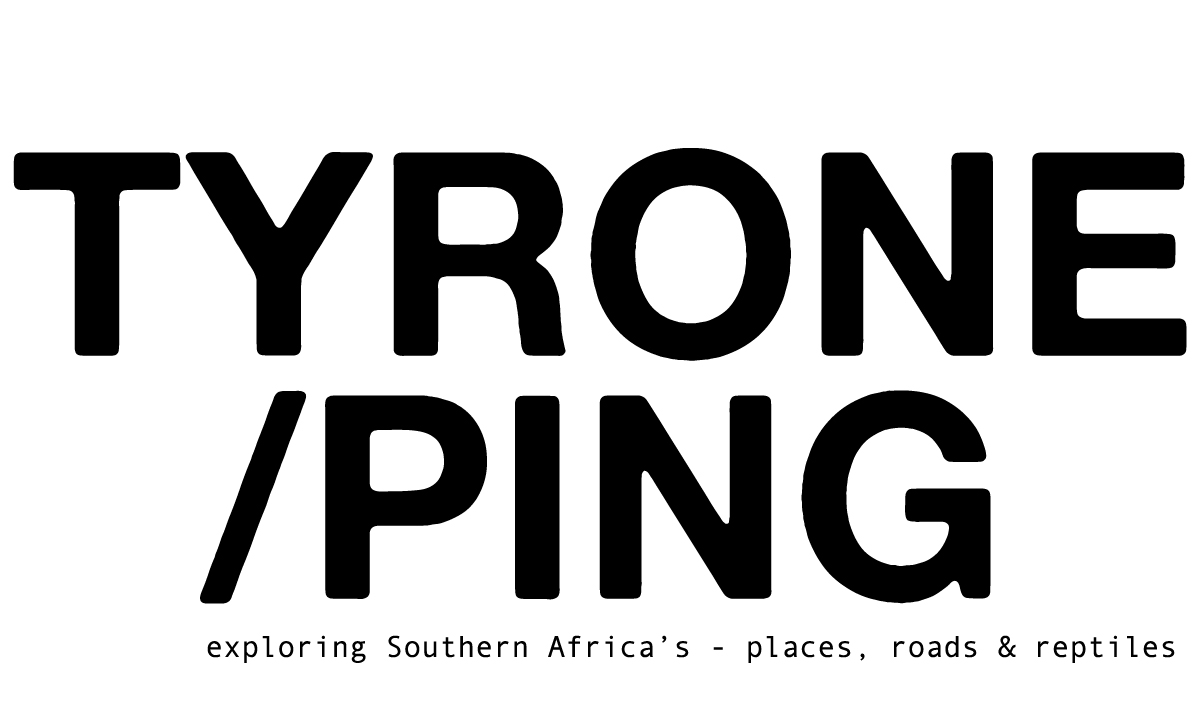SNAKES OF THE WESTERN CAPE.
The Western Cape covers approximately 129 462 km² and is home to forty-one species of snakes, twelve are venomous and bites are considered medical emergencies, nine are venomous but not considered dangerous and nineteen species are non-venomous.
HIGHLY VENOMOUS SNAKES.
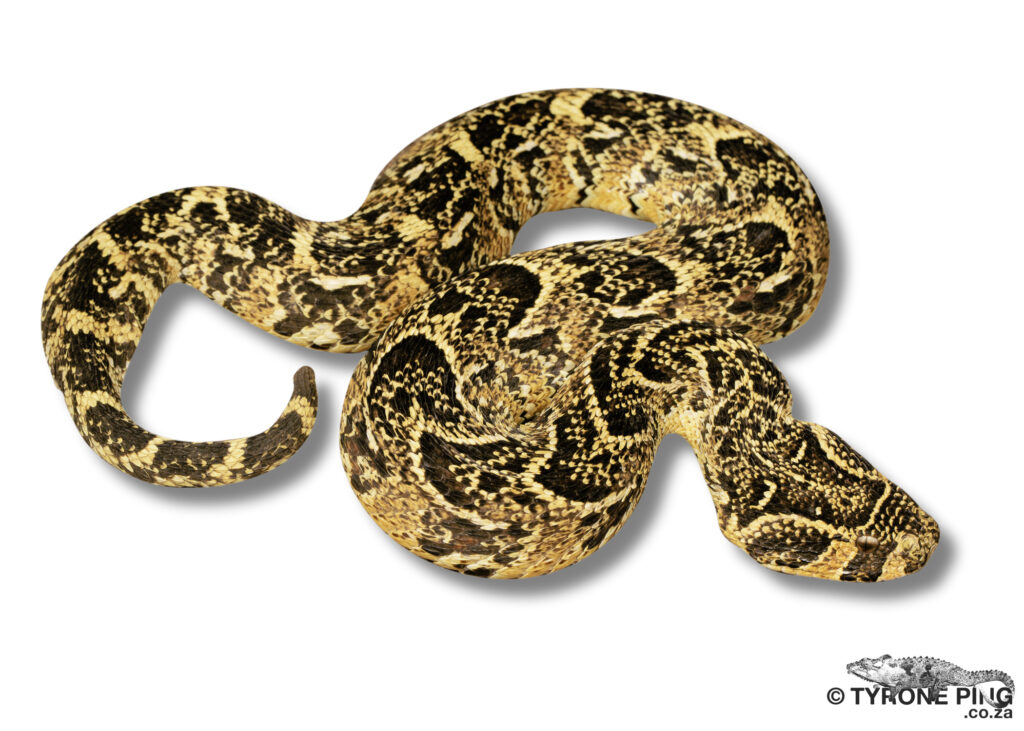
PUFF ADDER
(Bitis arietans)
The venom is potently Cytoxic, and although deaths are rare bites are managed with Polyvalent Antivenom.
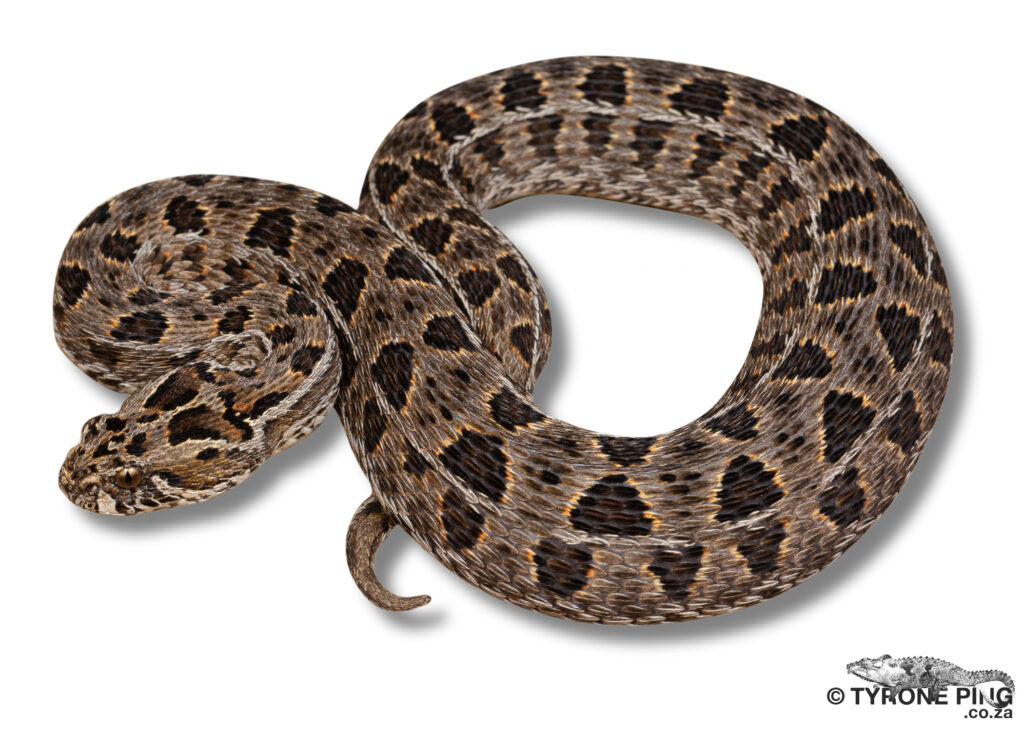
BERG ADDER
(Bitis atropos)
The venom is largely Neurotoxic, Antivenom is not effective in treatment of these bites.
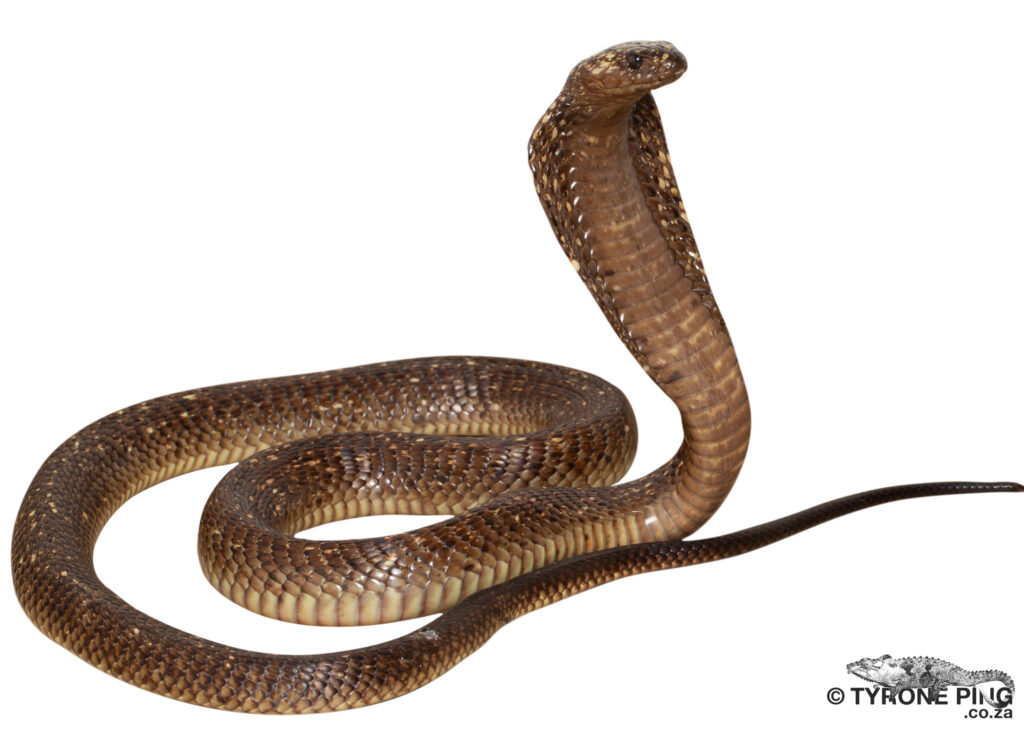
CAPE COBRA
(Naja nivea)
The venom is primarily a potent Neurotoxic, bites can be fatal and are managed with Polyvalent Antivenom.
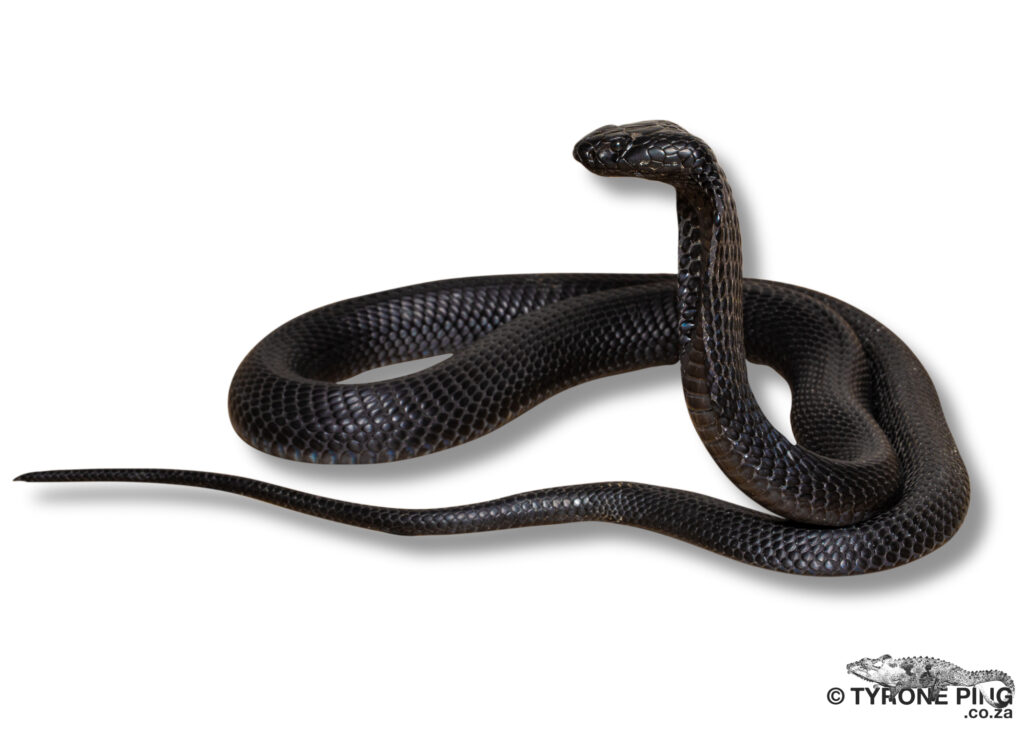
BLACK SPITTING COBRA
(Naja nigricincta woodi)
The venom is a potently cytotoxic venom, this is capable of spitting. Bites are managed with Polyvalent Antivenom.
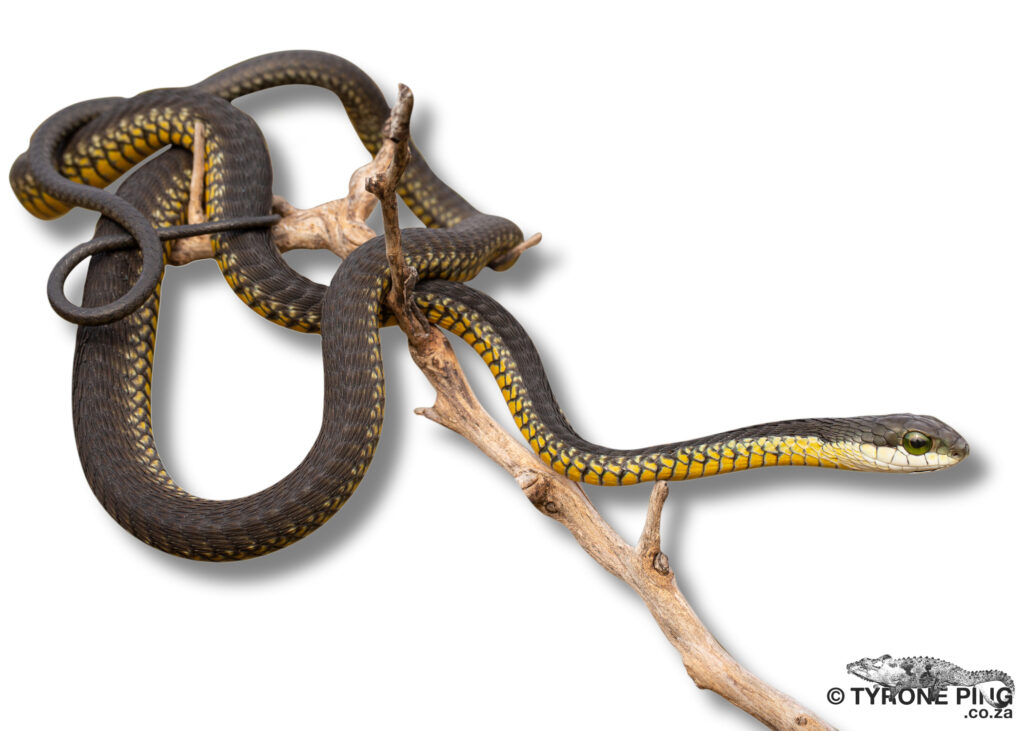
BOOMSLANG
(Dispholidus typus typus)
The venom is a potent Haemotoxic venom that can be fatal if not treated. Bites are managed with Monovalent Antivenom.
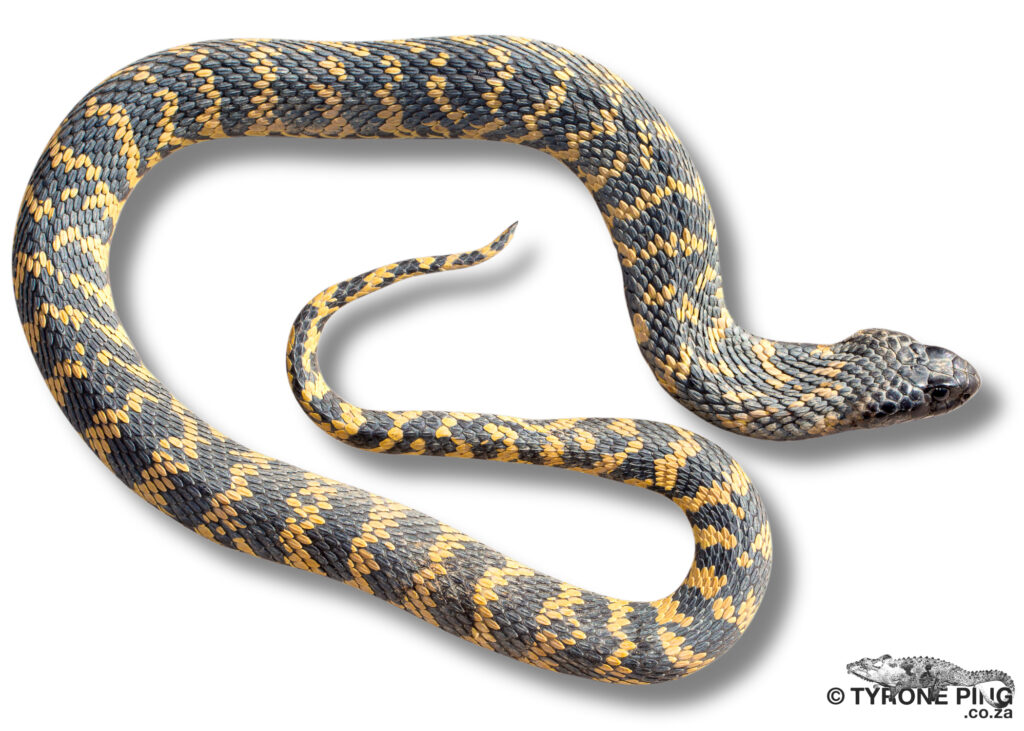
RINKHALS
(Hemachatus haemachatus)
The venom is largely Cytotoxic these snakes can also spit there venom. Bites are managed with Polyvalent Antivenom
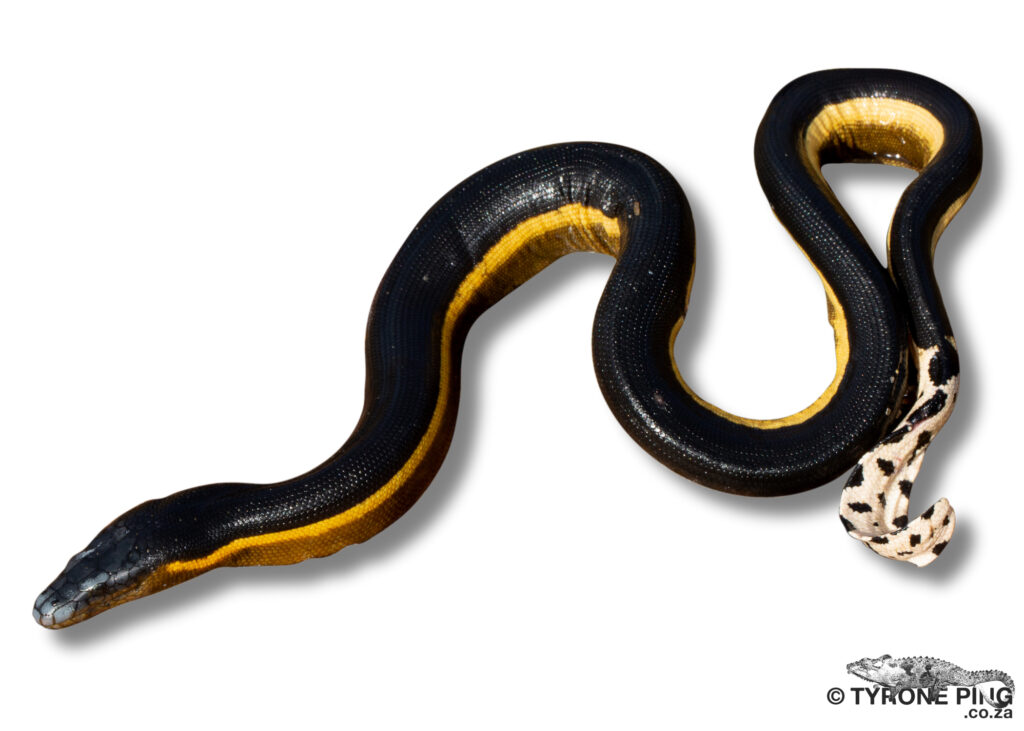
YELLOW-BELLIED SEA SNAKE
(Hydrophis platurus)
The venom is potently Neurotoxic, encounters are rare, and bites even more so.
DANGEROUSLY VENOMOUS SNAKES.
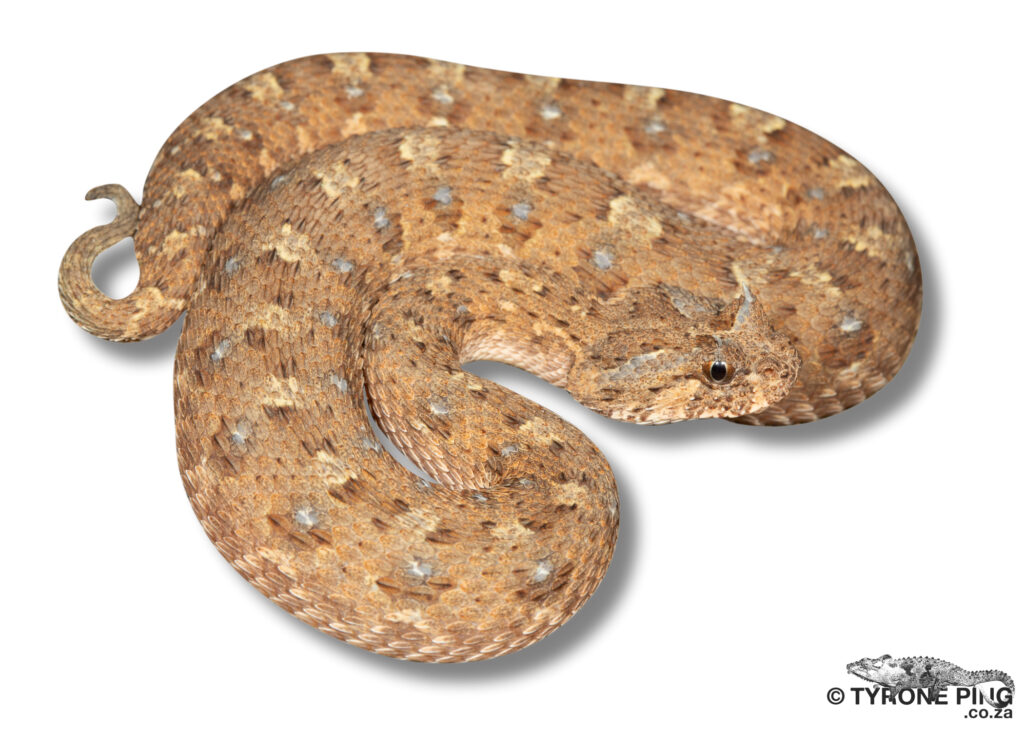
HORNED ADDER
(Bitis caudalis)
The venom is Cytotoxic, bites being painful are not managed with Polyvalent Antivenom.
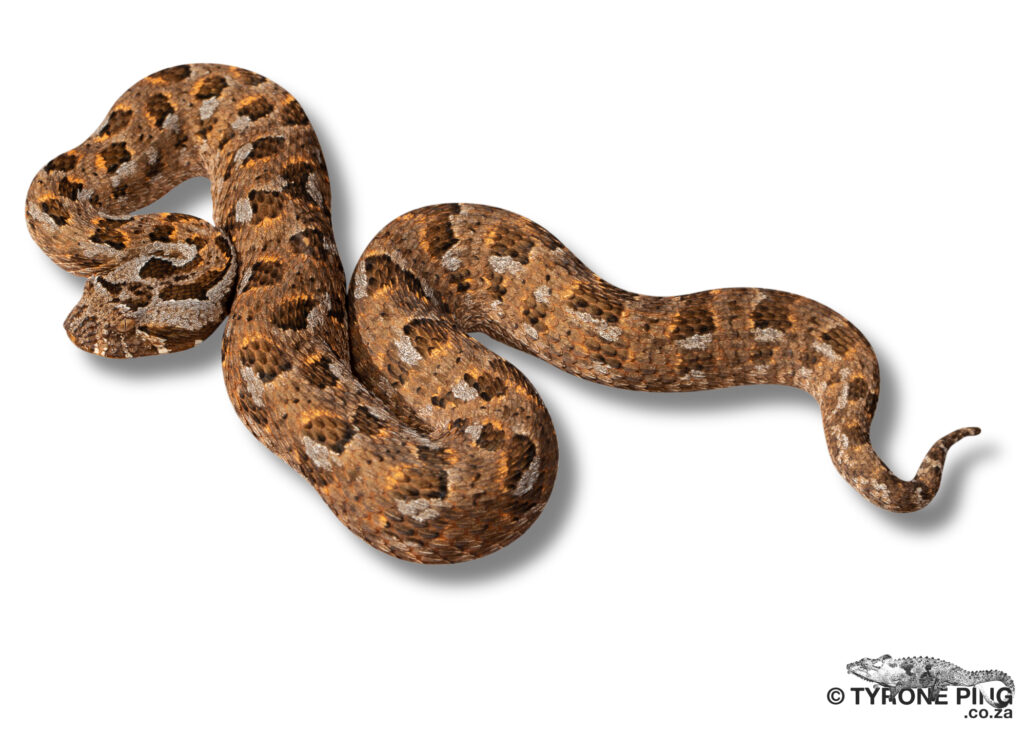
RED ADDER
(Bitis rubida)
The venom is Cytotoxic, bites being painful are not managed with Polyvalent Antivenom.
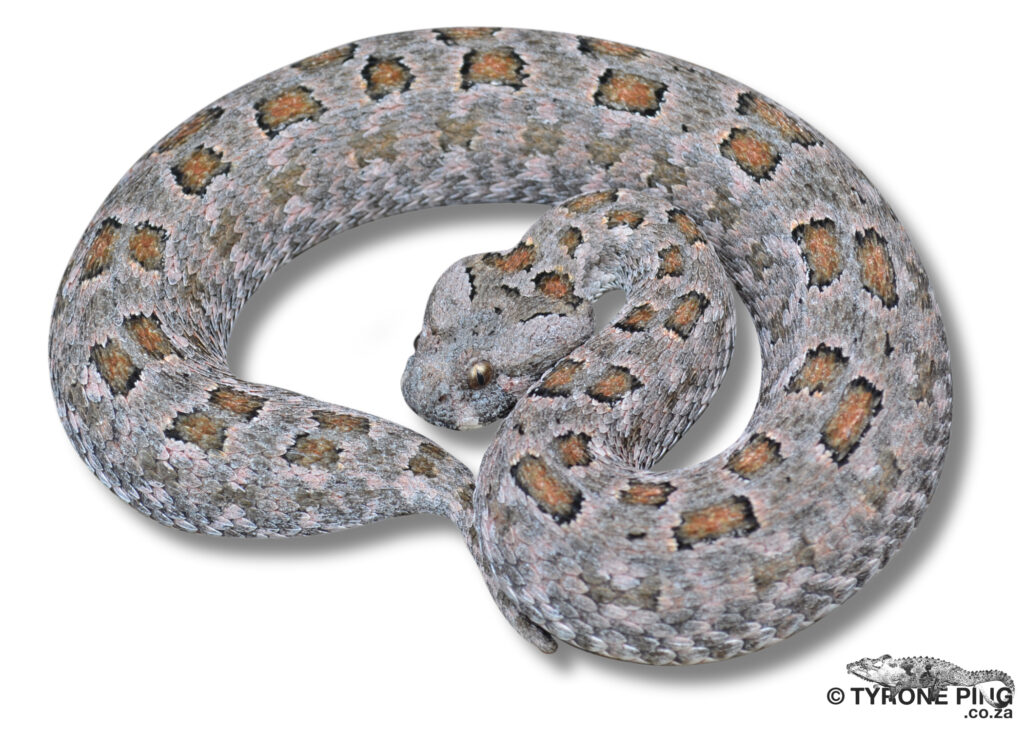
SOUTHERN ADDER
(Bitis armata)
The venom is Cytotoxic, and bites being painful are not managed with Polyvalent Antivenom.
Photo: Alessandro Varanini
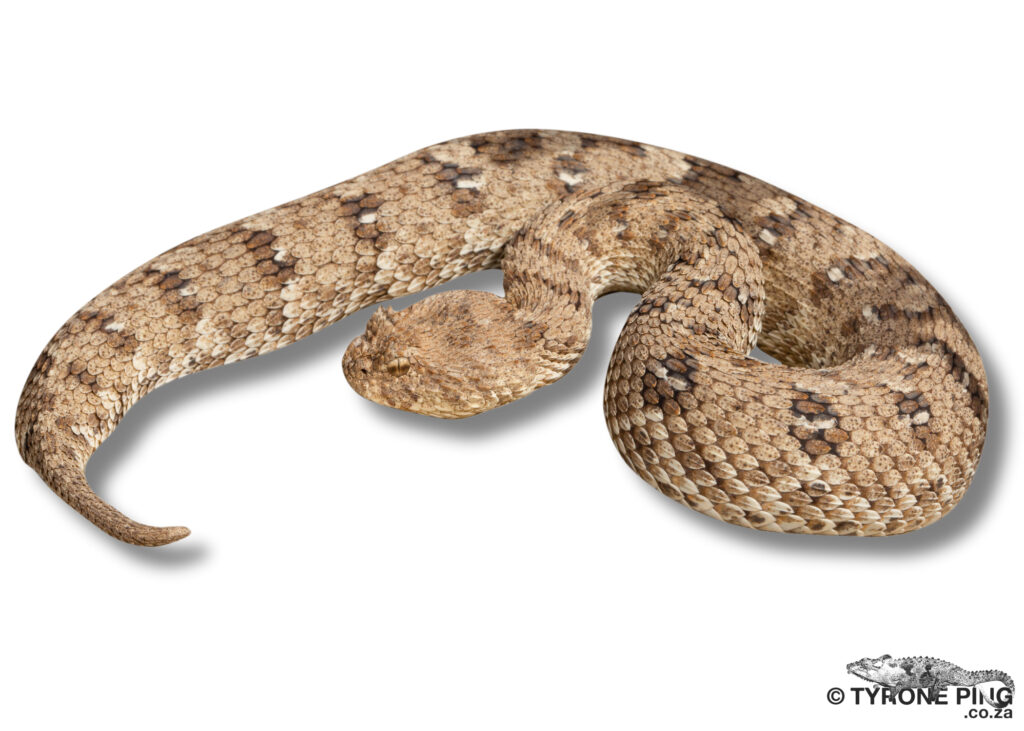
NAMAQUA DWARF ADDER
(Bitis schneideri)
The venom is Cytotoxic, bites being painful are not managed with Polyvalent Antivenom.
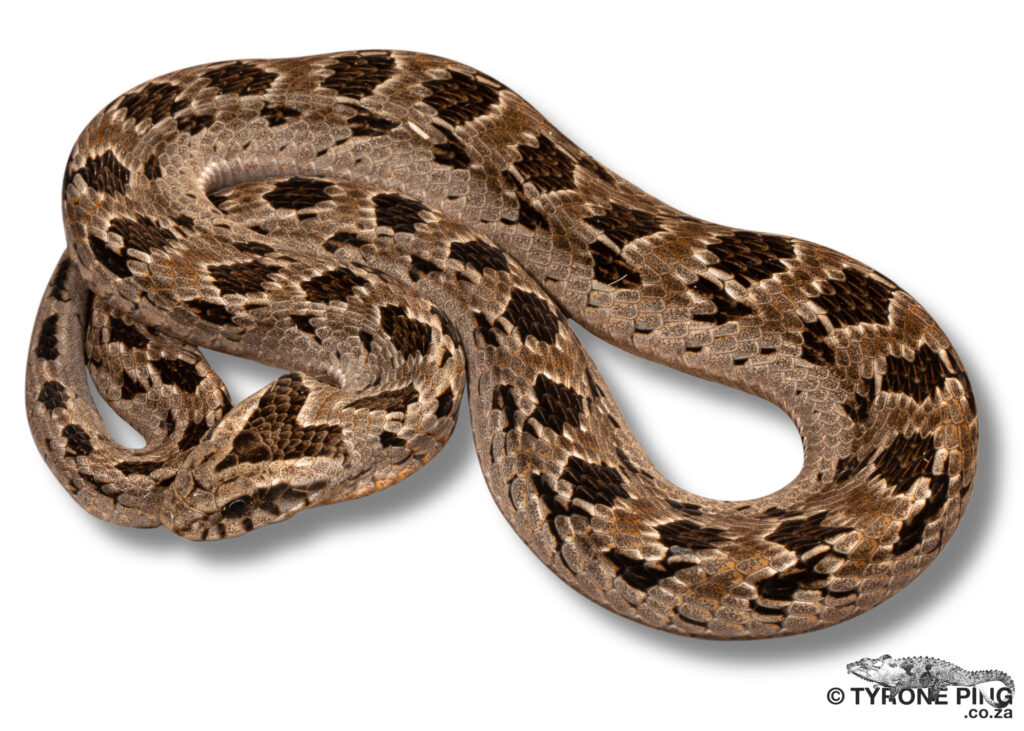
RHOMBIC NIGHT ADDER
(Causus rhombeatus)
The venom is Cytotoxic bites are painful but are not treated with Antivenom.
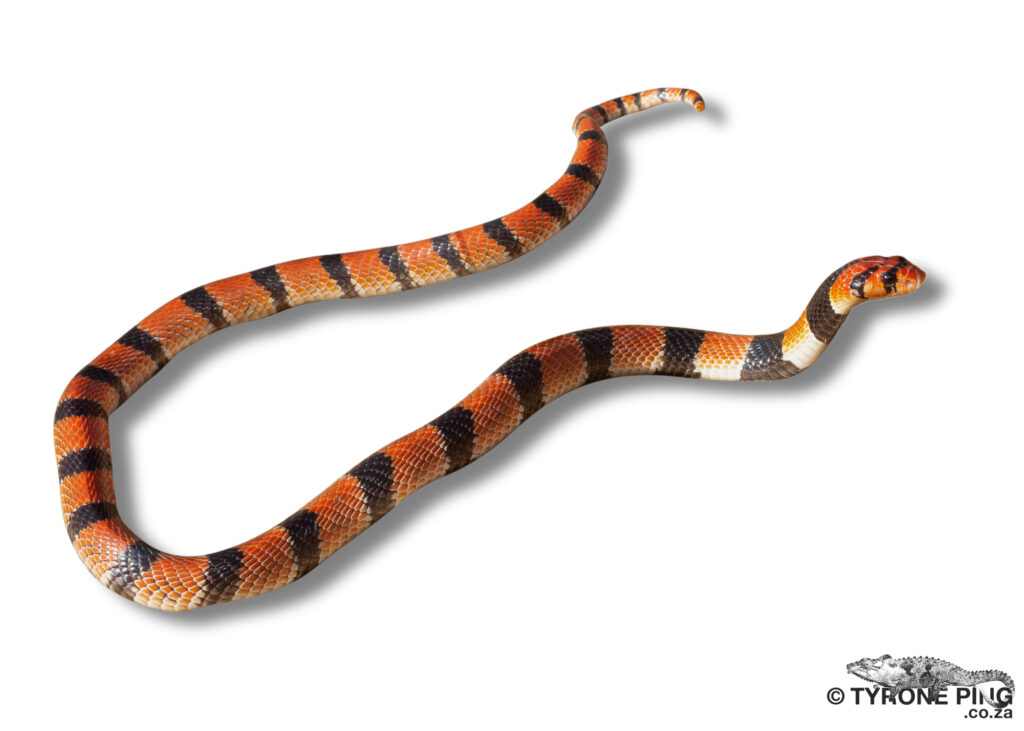
CAPE CORAL SNAKE
(Aspidelaps lubcricus lubcricus)
The venom is Neurotoxic, bites are not treated with Antivenom.
VENOMOUS SNAKES, NOT CONSIDERED DANGEROUS.
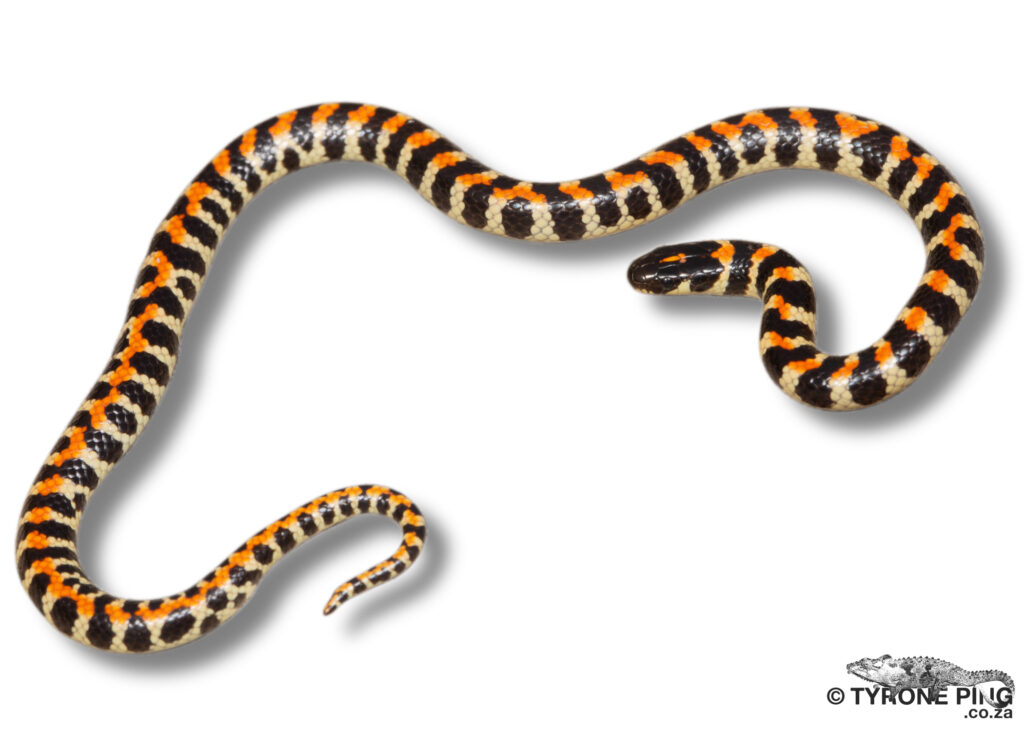
SPOTTED HARLEQUIN SNAKE
(Homoroselaps lacteus)
Front fanged, little is known about the venom. Bites result in acute pain, swelling and severe haemorrhaging at the lymph nodes and discolouration of the bite site.
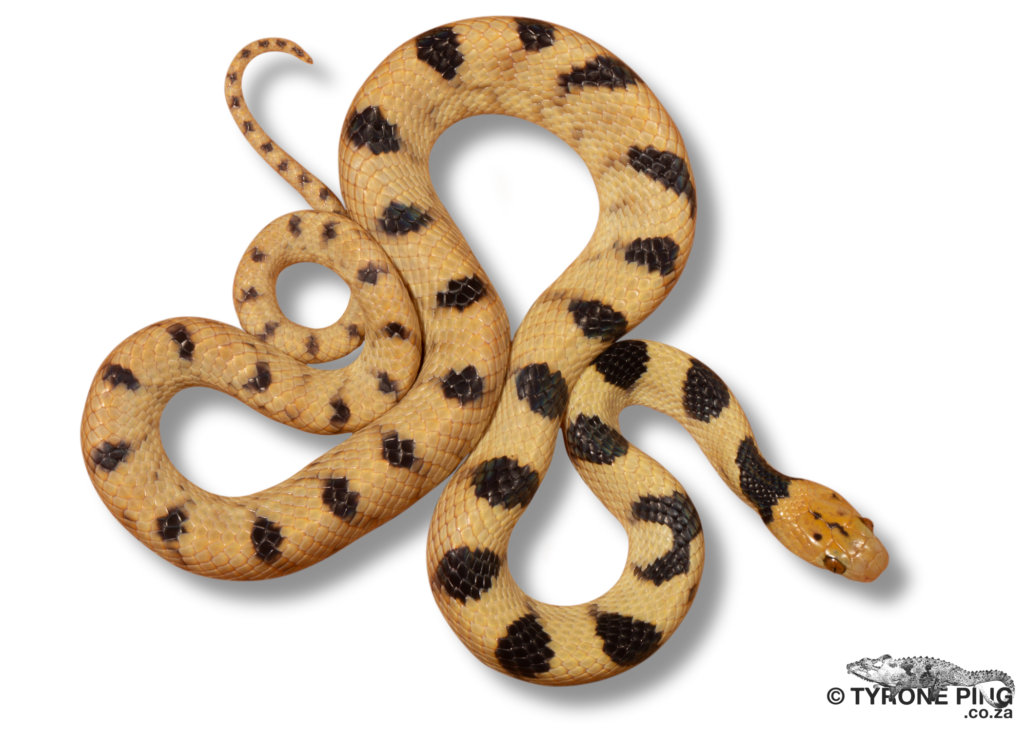
BEETZ’S TIGER SNAKE
(Telescopus beetzii)
A rear-fanged snake with a relatively weak venom, the venom that is not dangerous to people. Bites bleed freely momentarily, with itchiness and swelling may occur.
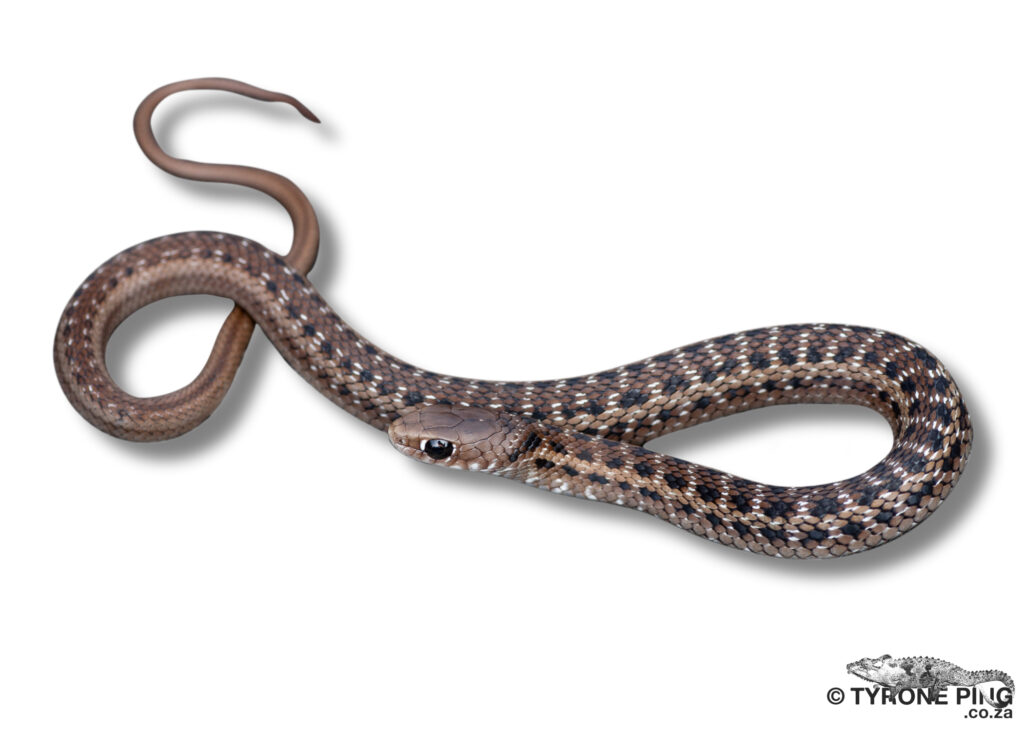
MANY-SPOTTED REED SNAKE
(Amplorhinus multimaculatus)
Rear fanged, bites may result in slight pain, localised swelling, and nausea which subside over a short time (similarly to Sand/Grass snakes).
Photo: Kurt van Wyk
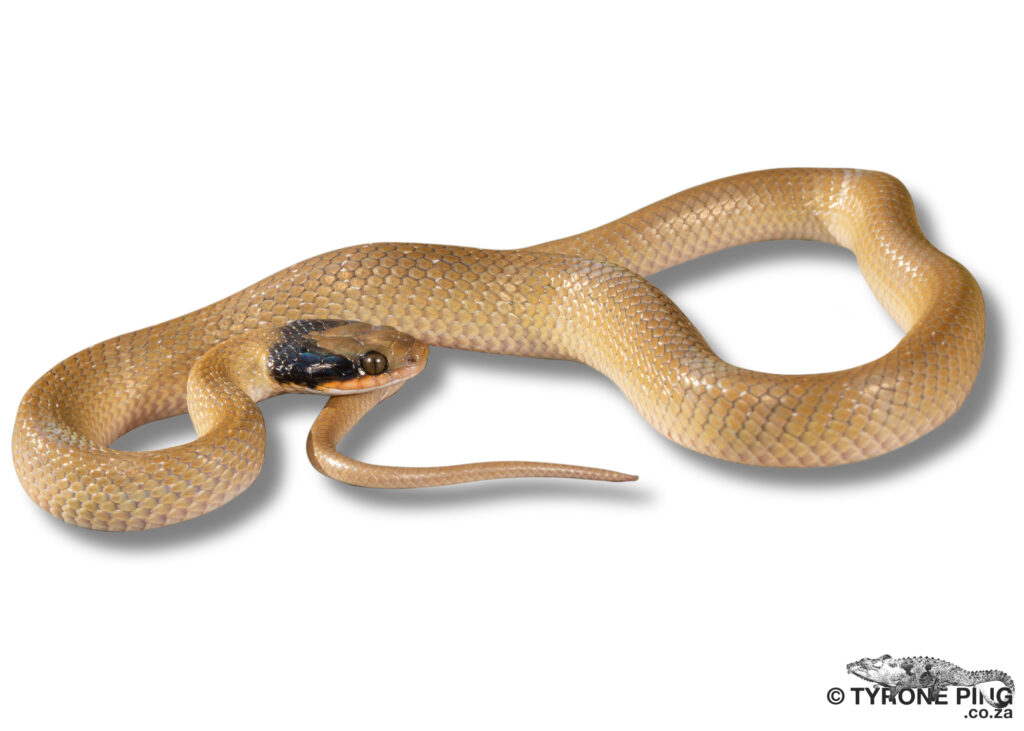
HERALD SNAKE
(Crotaphopeltis hotamboeia)
An ill-tempered rear fanged snake that will often immediately assume a defensive S-shaped pose. Flattening out its head (making it appear adder like), coiling up in a strike posture and will repeatedly strike out with its mouth agape usually just in bluff.
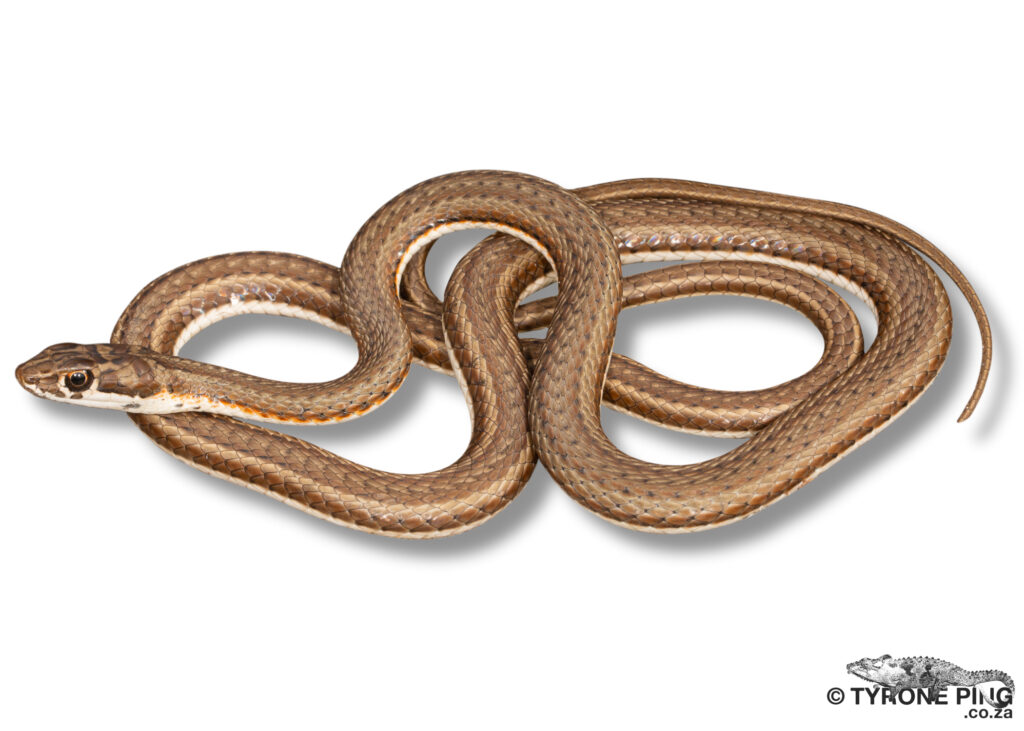
KAROO SAND SNAKE
(Psammophis notostictus)
Rear fanged, cytotoxic venom is not known to cause lasting ill effects. Allowing large specimens to chew and inject large quantities of venom may cause severe discomfort.
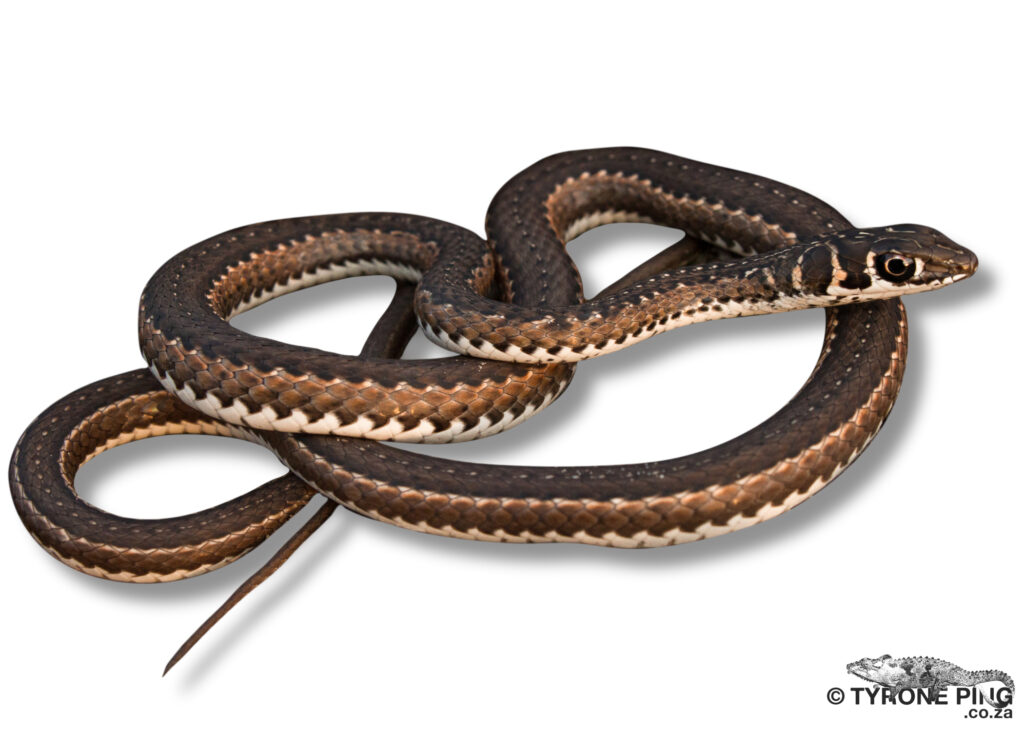
LEIGHTON’S SAND SNAKE
(Psammophis leightoni)
Rear fanged, cytotoxic venom is not known to cause lasting ill effects. Allowing large specimens to chew and inject large quantities of venom may cause severe discomfort.
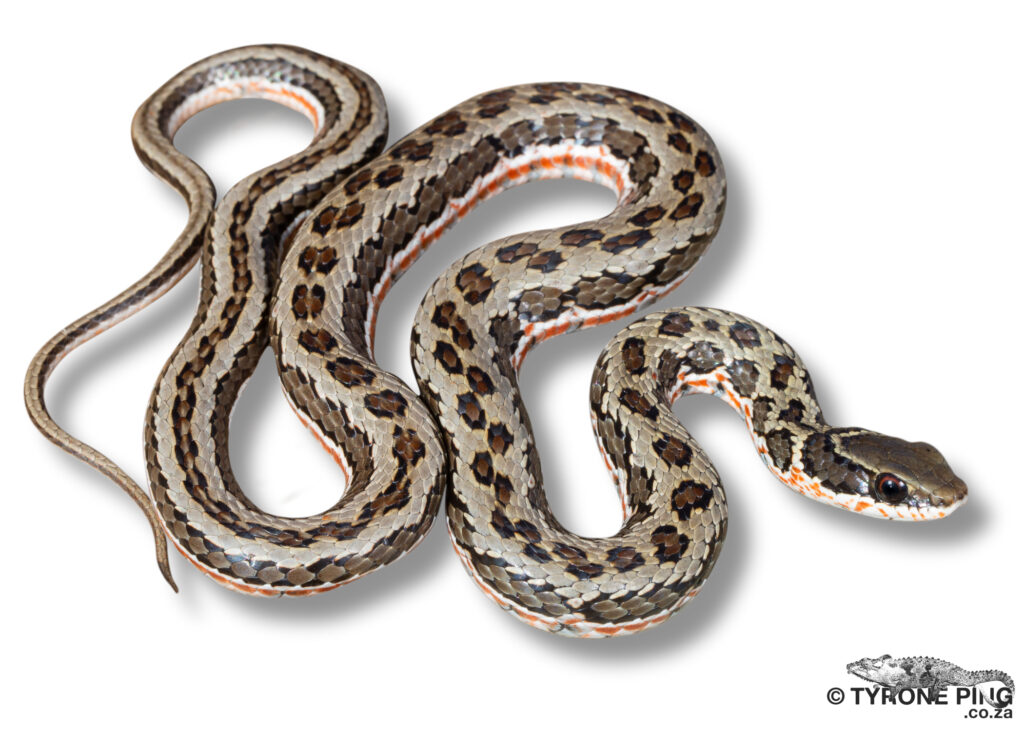
SPOTTED GRASS SNAKE
(Psammophylax rhombeatus)
A cytotoxic venom, full envenomations are not often recorded due to the fangs being in the rear of the mouth. Bites can cause localised pain, swelling, free bleeding at bite site and stiffness in the digits.
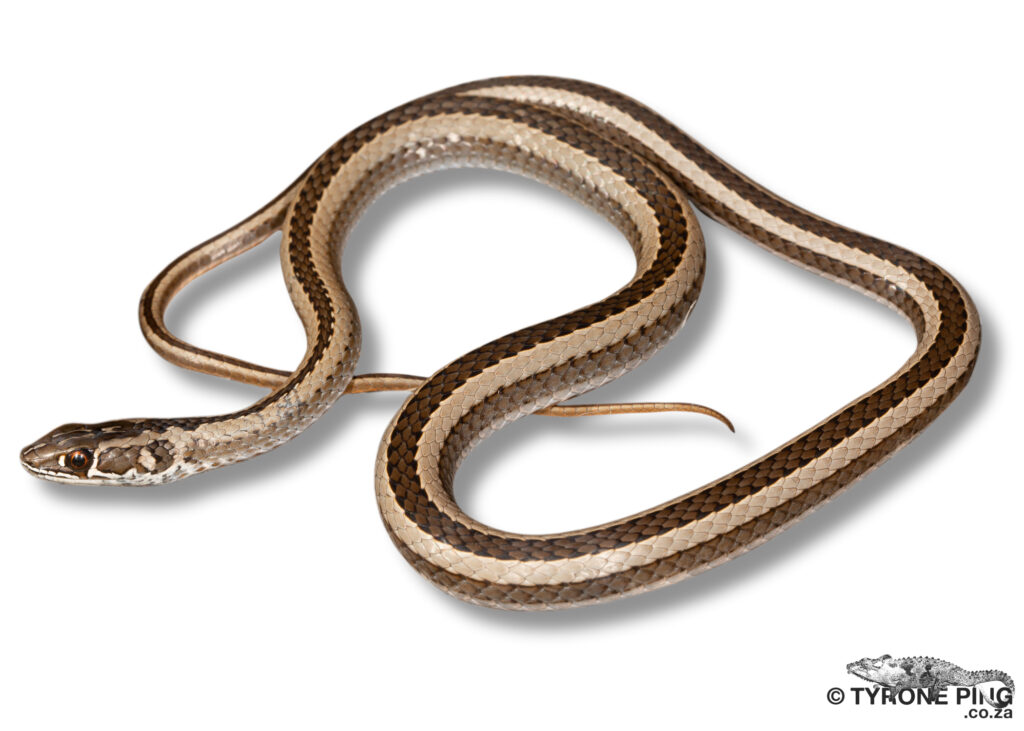
CROSS-MARKED CROSS SNAKE
(Psammophius crucifer)
Rear fanged, cytotoxic venom is not known to cause lasting ill effects. Allowing large specimens to chew and inject large quantities of venom may cause severe discomfort. Symptoms include pain, swelling, itchiness and stiffness in affected region particularly on the digits.
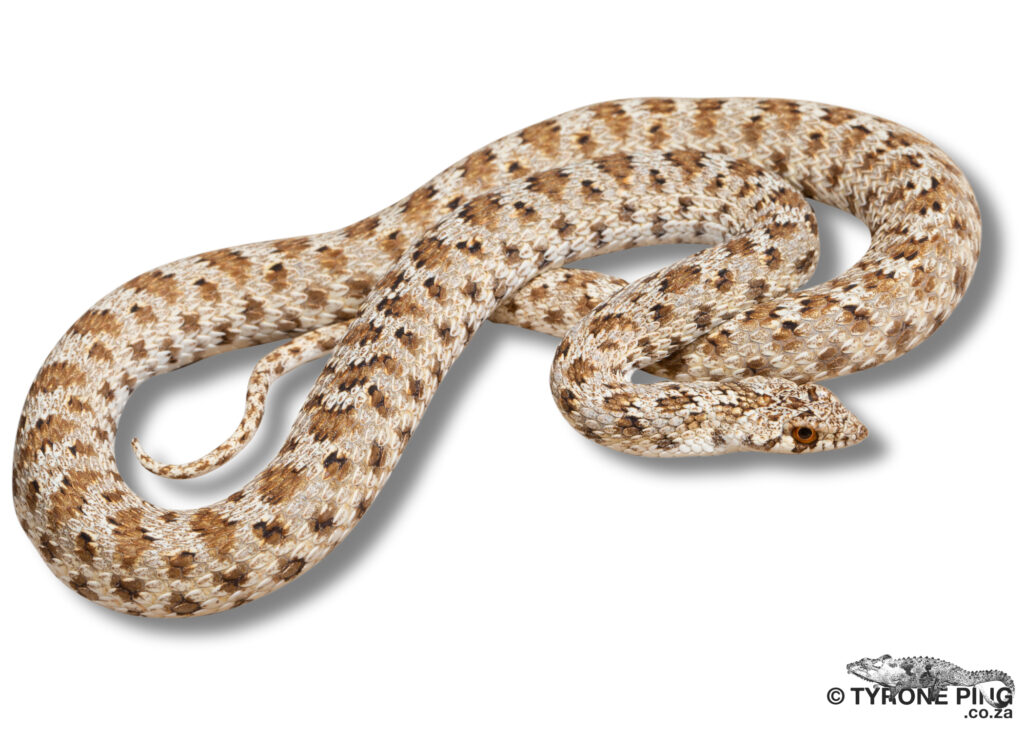
DWARF-BEAKED SNAKE
(Dipsina multimaculata)
Although venomous these snakes are small in stature and rarely attempt to bite even when handled. There is virtually nothing known about the venom only that is is strong enough to subdue small lizard and geckos.
NON-VENOMOUS SNAKES.
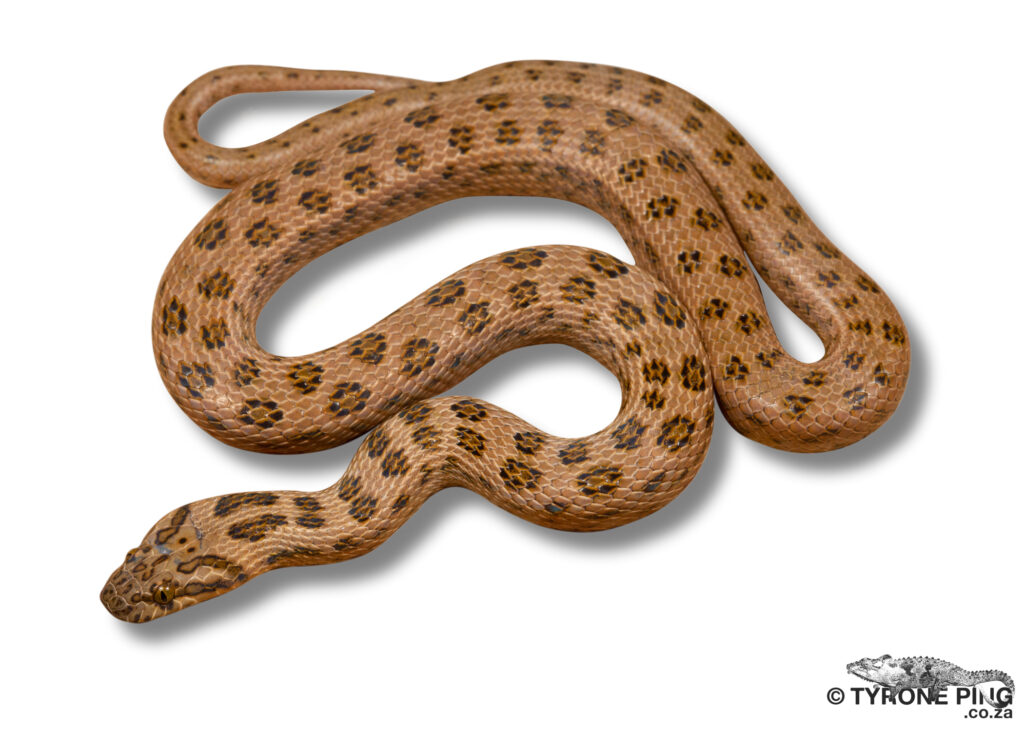
SPOTTED ROCK SNAKE
(Alopecion guttatum)
A nocturnal snake favouring rocky ridges, boulders and rock faces. A short flat head is perfectly suited for residing in rock cracks and under rocks.

BROWN HOUSE SNAKE
(Boaedon capensis)
One of the most widespread and common harmless snakes in the country due to their non specialised diets and adaptability to thrive in urban environments

BUG-EYED HOUSE SNAKE
(Boaedon mentalis)
Although originally described in 1888 it was treated as a population of Brown House Snake (Boaedon capensis) until recognised as a separate species in 2020. An attractive nocturnal snake with two defined white stripes on either side of the head and a uniformly coloured body, with its large bulbous “bug eyes” it can easily be set apart from the more widespread Brown House Snake.
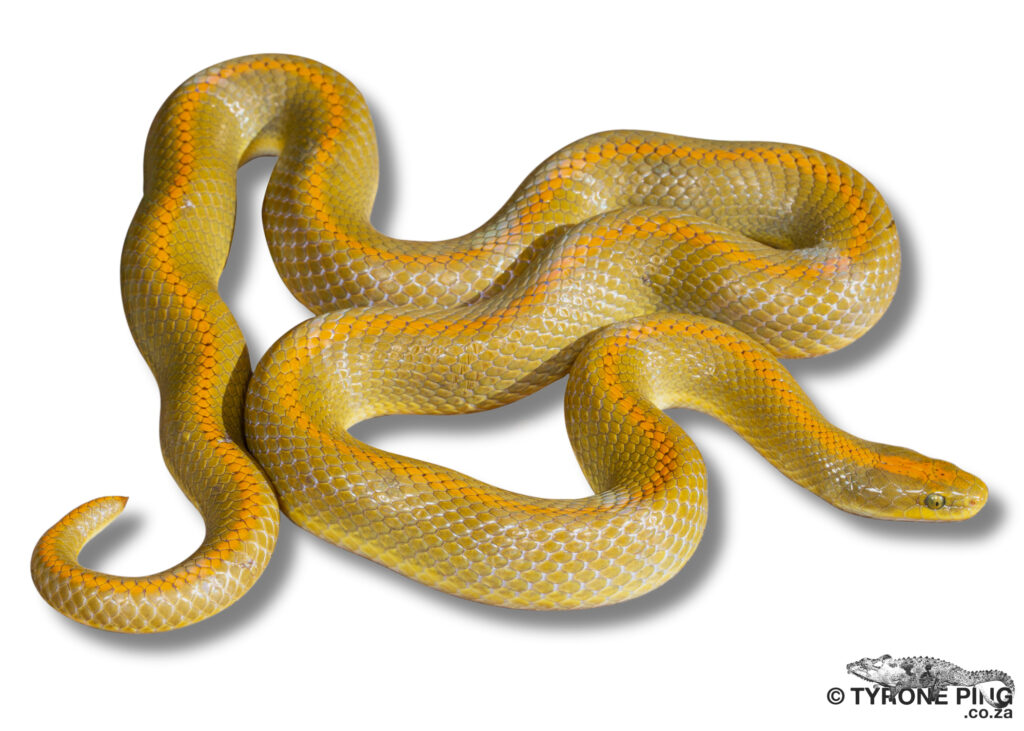
AURORA HOUSE SNAKE
(Lamprophis aurora)
A beautifully marked nocturnal constrictor that seldom attempts to bite. A common snake, which may be locally abundant in some areas particularly around Cape Town and its suburbs. They can usually be found seeking refuge under logs, rocks, disused termite mounds and building debris around damp localities.
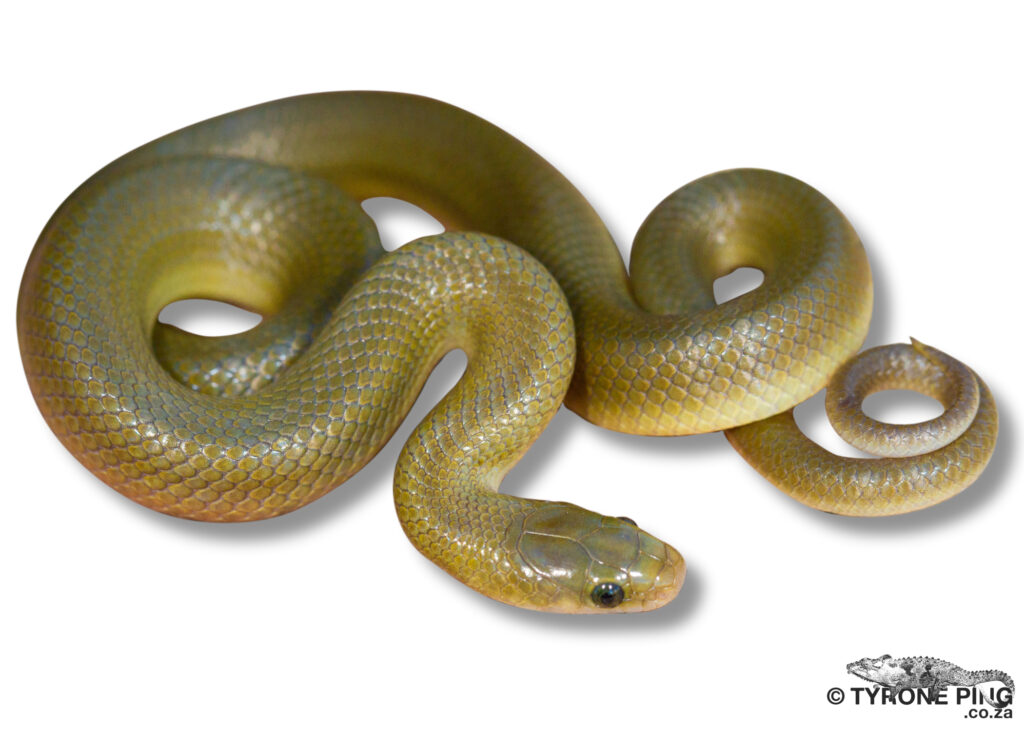
YELLOW-BELLIED HOUSE SNAKE
(Lamprophis fuscus)
A small uncommon nocturnal species, often found in old termite mounds, and under rocks and stones on rocky hillsides. Shy, poorly known with few recorded species in the region.
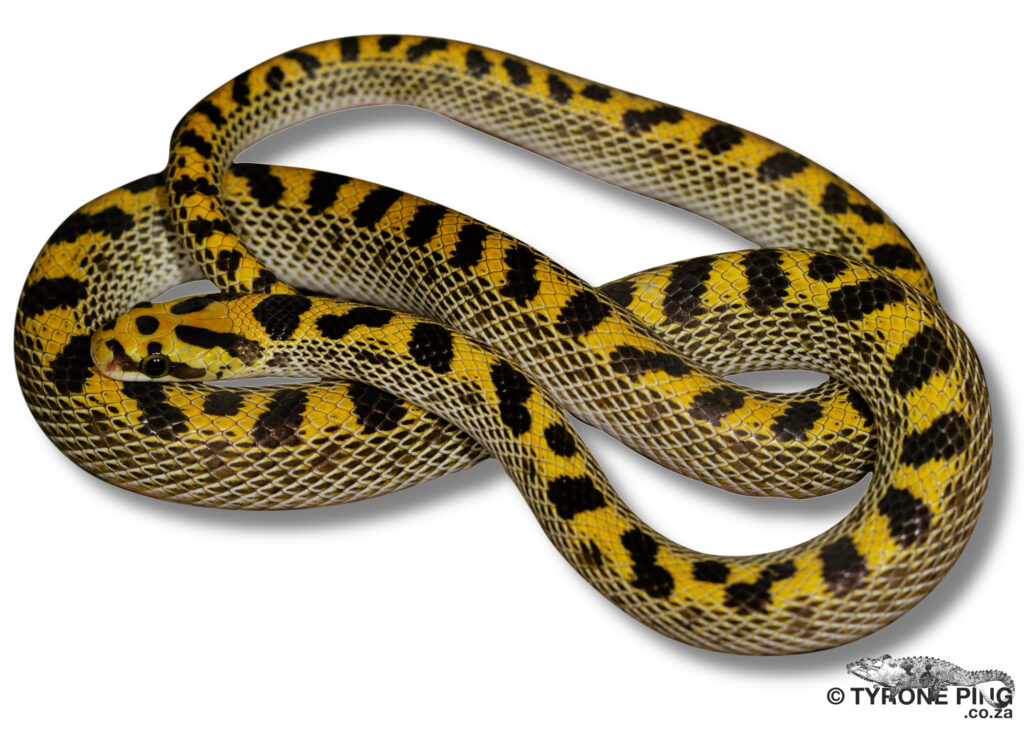
FISKS’ HOUSE SNAKE
(Lamprophis fiskii)
Arguably one of the regions most beautiful and rarely seen species. Little is known about the Fisk’s House Snake are they are rarely encountered and known from less than 50 specimens.
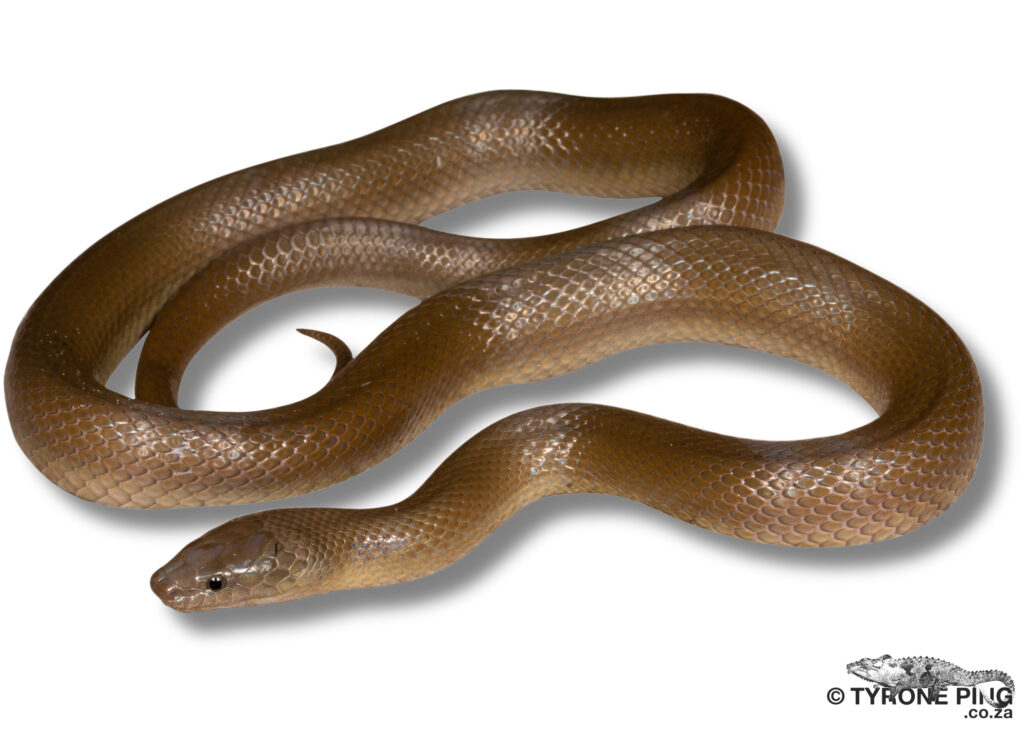
OLIVE SNAKE
(Lycodonomorphus inornatus)
A large robust nocturnal snake which can be locally abundant in certain areas (previously known as the Olive House Snake, Olive Ground Snake and occasionally Olive Night Snake). They often shelter beneath rocks, logs and building rubble.
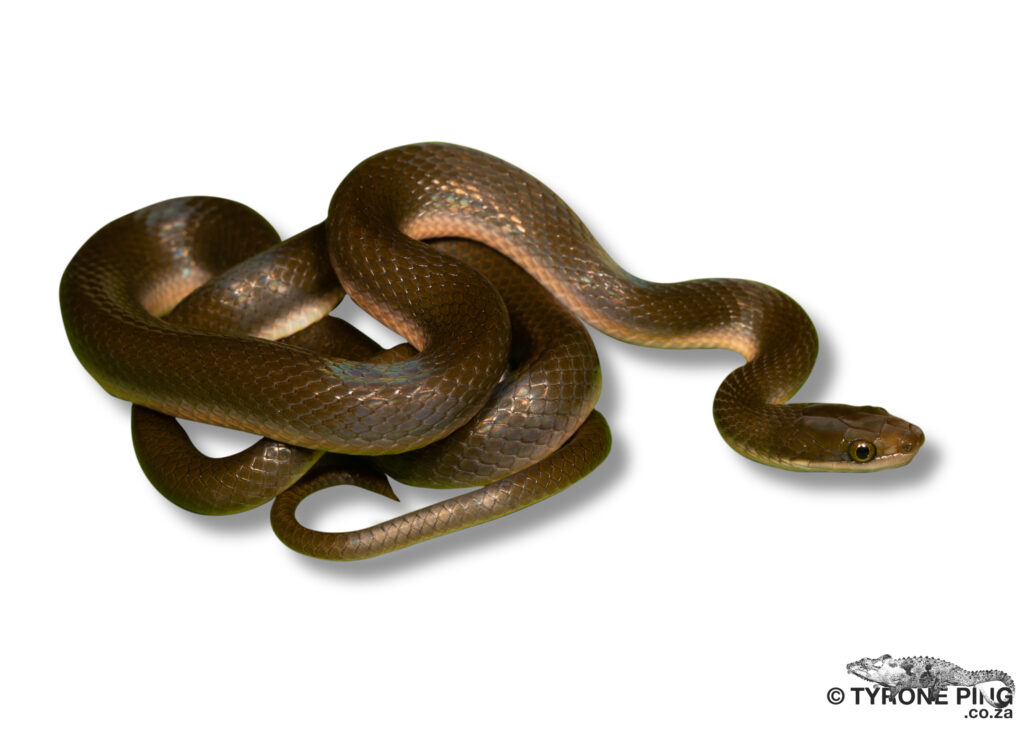
BROWN WATER SNAKE
(Lycodonomorphus rufulus)
A slender inoffensive nocturnal snake with a distinctive elongated head which is distinct from the neck, a long elongated tail which ends in a distinct sharp point. Commonly seen at night around suburban garden ponds, streams amongst vegetation and reed beds.
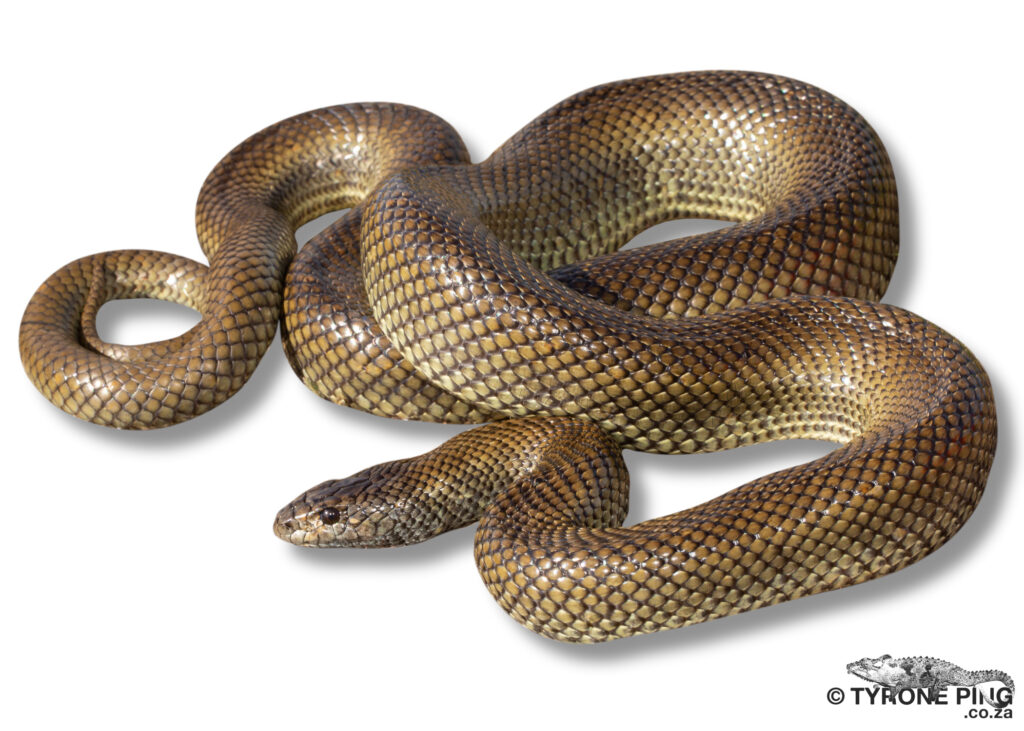
MOLE SNAKE
(Pseudaspis cana)
A large robust cylindrical shaped diurnal snake. Mole snakes are widespread and common throughout much of the Cape, lesser so in the drier arid regions.
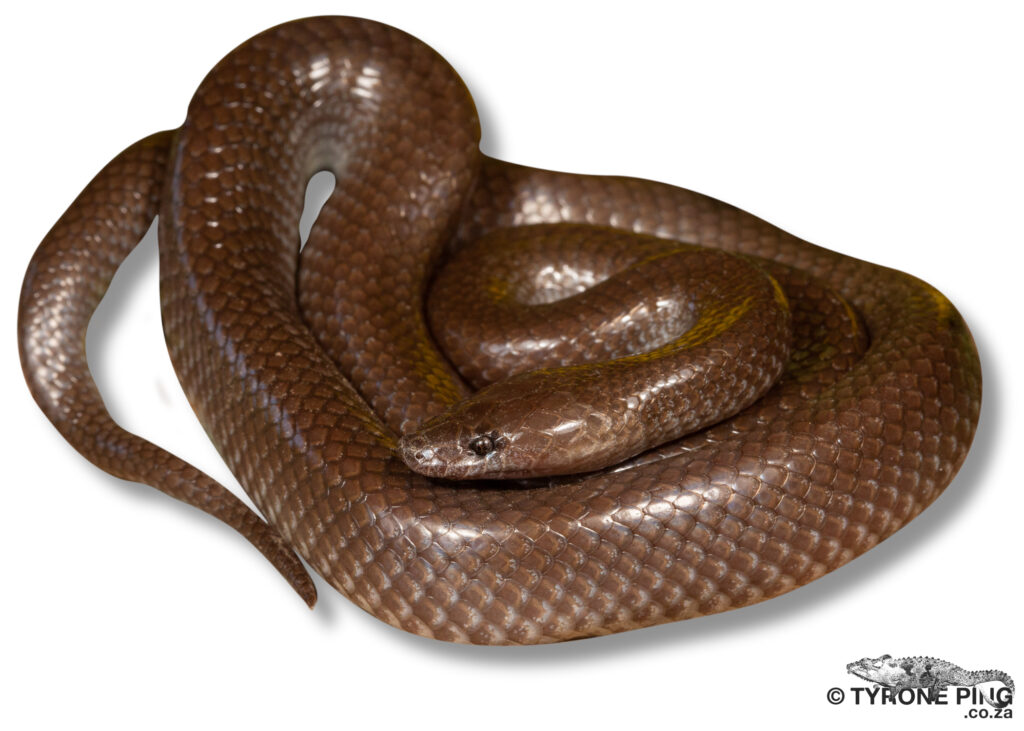
CAPE WOLF SNAKE
(Lycophidion capense)
A small inoffensive nocturnal snake with small eyes and a short flat head, that despite its common name, seldom attempts to bite.
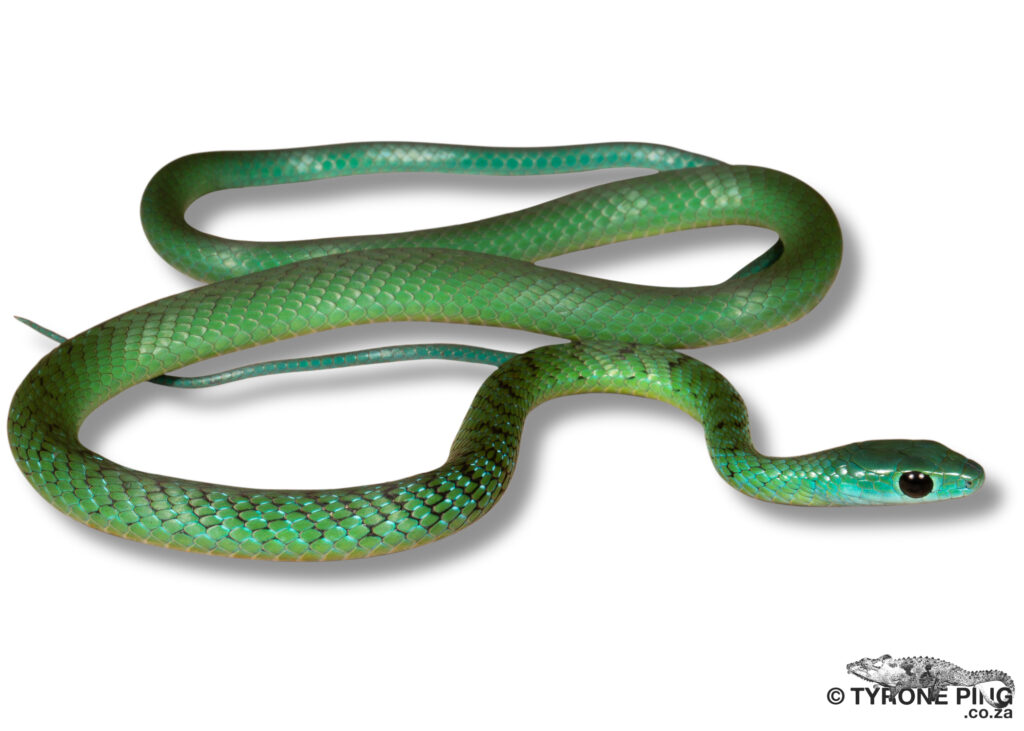
WESTERN NATAL GREEN SNAKE
(Philothanus occidentalis)
A beautifully coloured diurnal snake that can usually be seen basking on logs or bushes alongside streams. Often confused with Boomslang (there are no green Boomslang in the Western Cape).
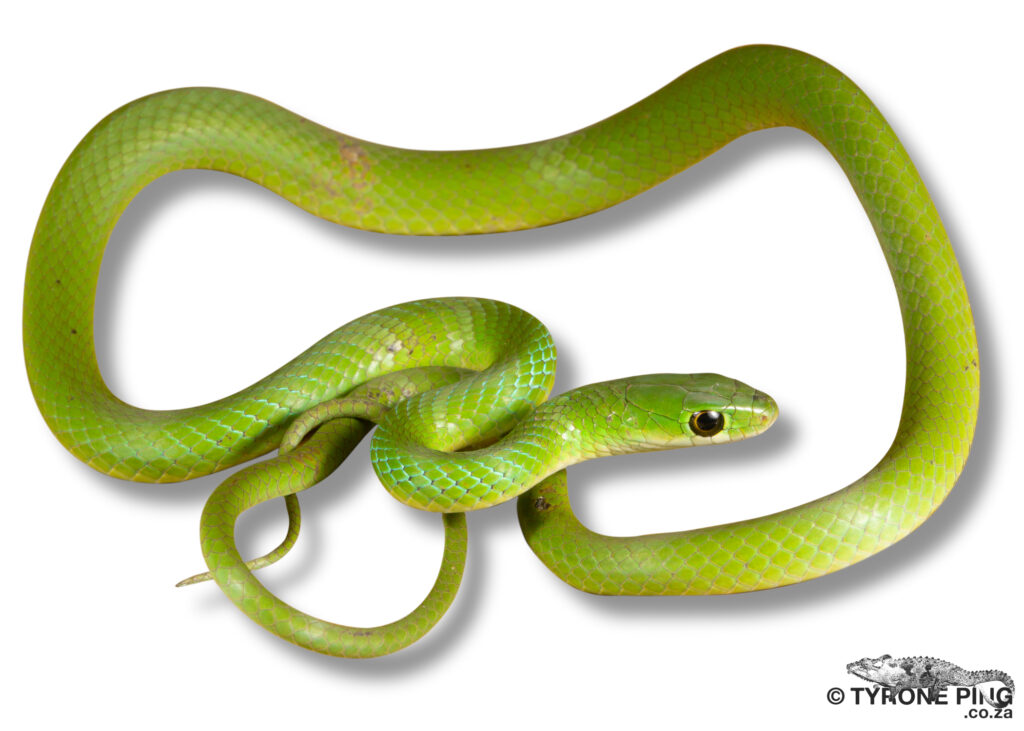
SOUTH-EASTERN GREEN SNAKE
(Philothamnus hoplogaster)
A slender, shy, and inoffensive green snake that is usually slow moving and seldom attempts to bite. Preferring damp localities, along shaded streams and reed beds.
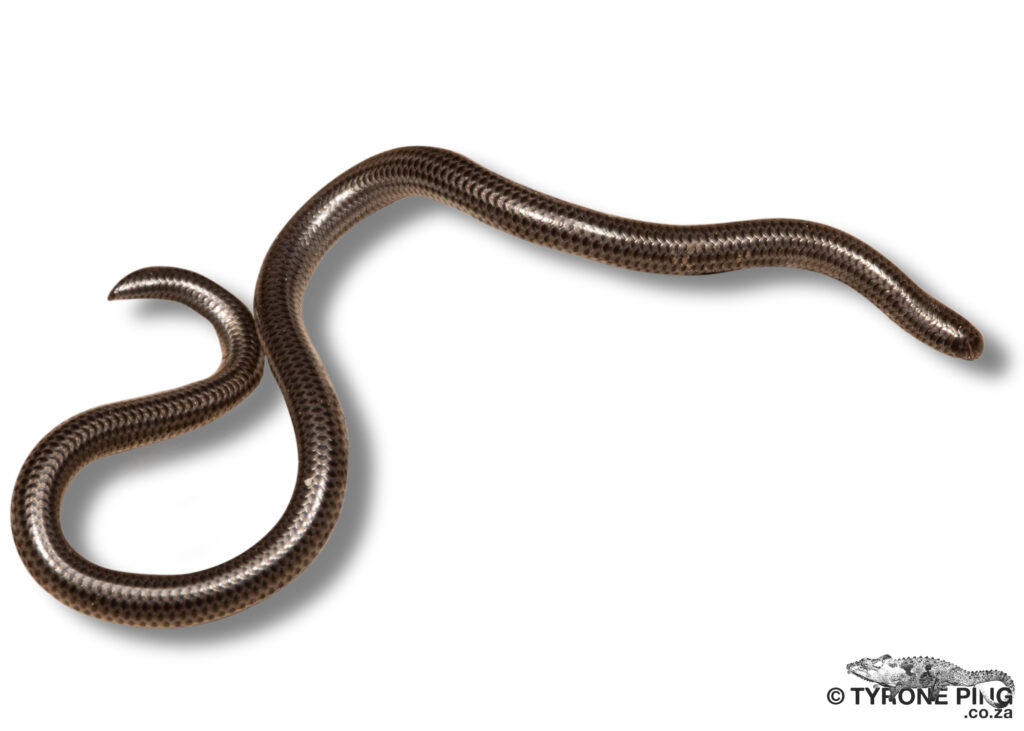
BLACK THREAD SNAKE
(Leptotyphlops nigricans)
A small thick set thread snake often found under rocks, stones and logs on soft sandy soils. They have distinct cylindrical bodies and may often be mistaken for worms.

BRAMINY BLIND SNAKE
(Indotyphlops braminus)
The country’s only introduced snake species. Originally from Southern Asia, these small inoffensive snakes have now made their way around the world.
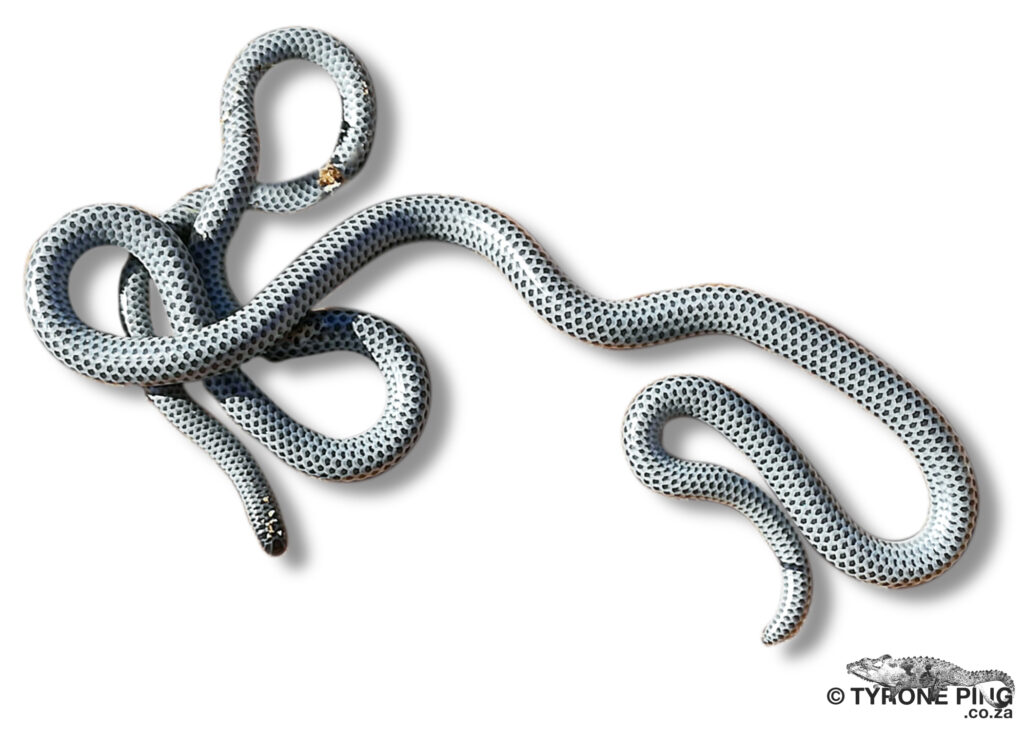
SLENDER THREAD SNAKE
(Namibiana gracilior)
A long slender snake, which can be found under stones and in disused termite mounds. Moving erratically when unearthed and seldom sits in one position for too long.
Photo: Martin Strümpfer
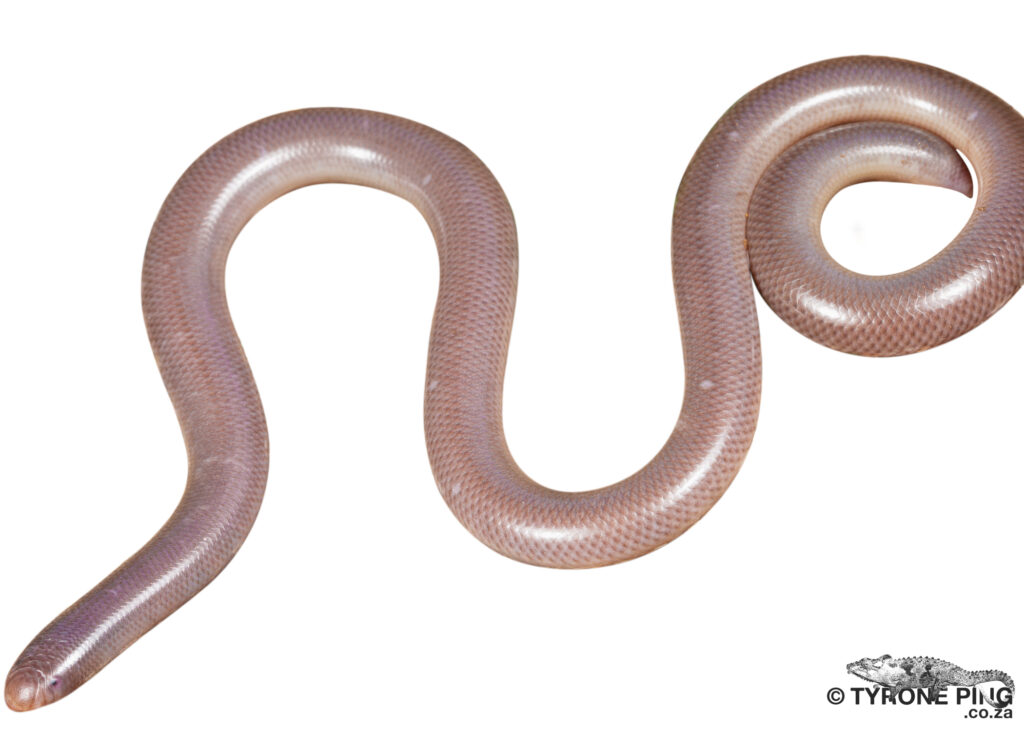
DELALANDE’S BEAKED BLIND SNAKE
(Rhinotyphlops lalandei)
A small cylindrical snake with minute eyes and a distinct angled snout. They can be found under rocks, logs and building rubble where they burrow into soft sands often creating small burrows.
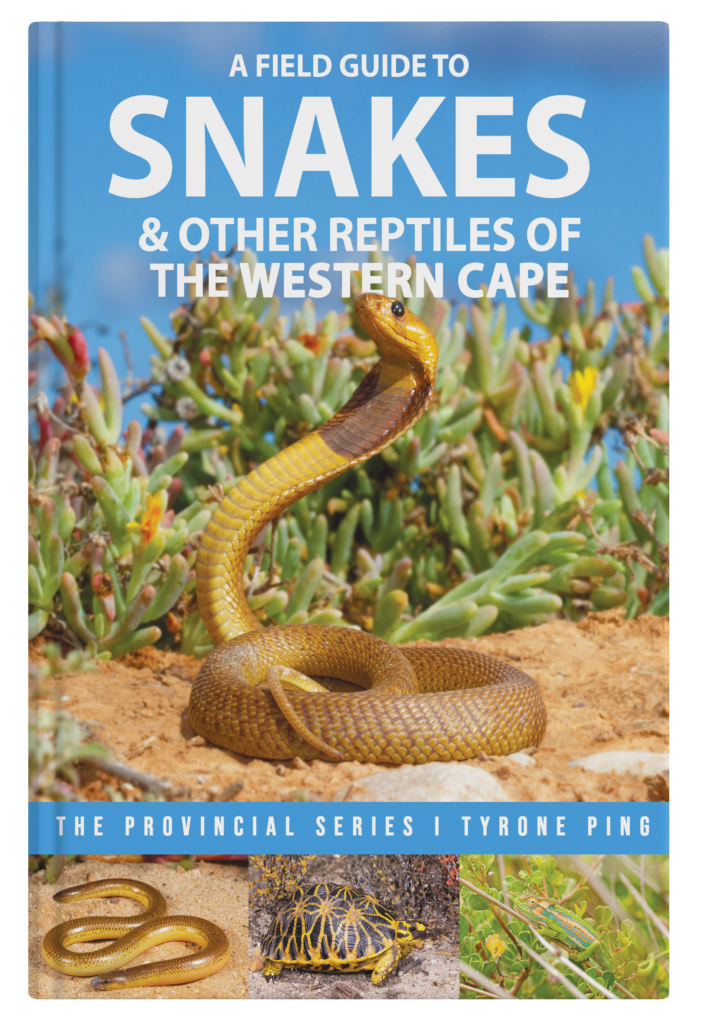
A FIELD GUIDE TO SNAKES & OTHER REPTILES OF THE WESTERN CAPE.
In this guide, Tyrone showcases these species in detail, with over 450 colour photographs, concisely written accounts, and NEW distribution maps of each species that have been recorded in the region.
The Western Cape is a diverse region with an abundance of unique fauna and flora. With over 150 species of reptiles and some of the most iconic species call the Western Cape home. From the Cape Cobra, Puff Adder, and Boomslang. Many of South Africa’s its recently described and discovered reptiles have been found in the Western Cape.
The Author has made a conscious effort to convey the information in an easy-to-follow guide that will aid first-time reptile enthusiasts, children wanting to explore the various species and seasoned herpetologists, alike.
Author: Tyrone Ping
ISBN: 978-0-620-98814-5
Format: Soft Cover
Release Date: 2023
Publisher: Pachydactylus Press
Written and Printed In South Africa
Pages: 302
